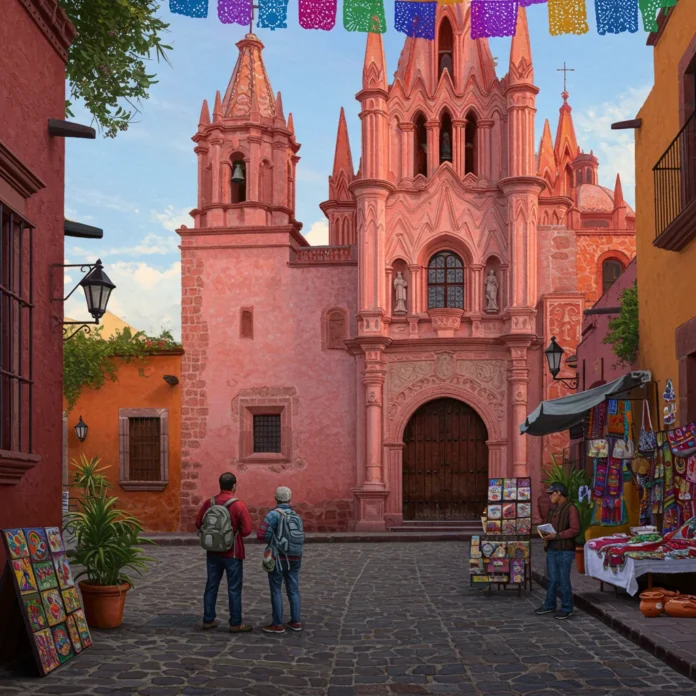Introduction to San Miguel de Allende’s Historical & Cultural Walking Tour
San Miguel de Allende invites travelers into its cobblestone streets, where every corner tells a story of Mexican culture, history, and artistry. This colonial city, nestled in the heart of Guanajuato, offers a walking tour experience that immerses visitors in vibrant plazas, centuries-old churches, and bustling markets. As we stroll through its lively avenues, we encounter a harmonious blend of Spanish and indigenous influences, each contributing to the city’s enduring charm.

The city’s warm sunlight bathes pastel facades and baroque spires, while the aroma of freshly baked bread drifts from local bakeries. A walking tour allows us to absorb the sights, sounds, and flavors that make San Miguel de Allende an unforgettable destination.
Why Take a Walking Tour in San Miguel de Allende?
A walking tour in San Miguel de Allende is the most rewarding way to appreciate its intricate urban fabric and rich cultural tapestry. Walking enables us to pause at hidden courtyards, admire intricate stonework, and engage with friendly locals who are proud of their city’s legacy.
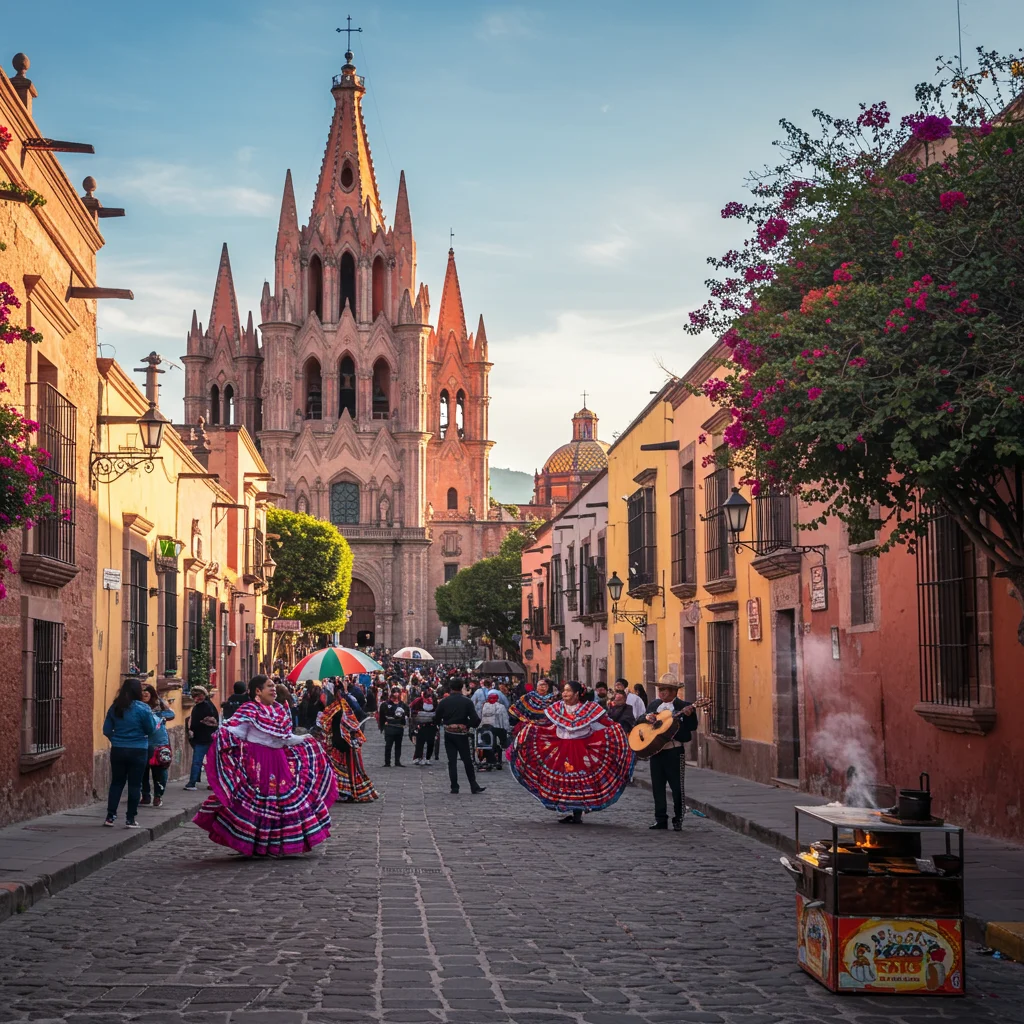
Unlike bus or car tours, traveling on foot fosters a deeper connection to the city’s rhythm. We can linger in sun-dappled plazas, savor street performances, and sample authentic snacks along the way. The city’s compact size and safe, pedestrian-friendly streets make exploring on foot both practical and pleasurable.
What Makes San Miguel de Allende a UNESCO World Heritage Site?
San Miguel de Allende earned its UNESCO World Heritage status in 2008 due to its remarkable preservation of baroque and neoclassical architecture, as well as its key role in Mexico’s independence movement. The city’s historic center and the nearby Sanctuary of Atotonilco together form a protected area recognized for their outstanding universal value.
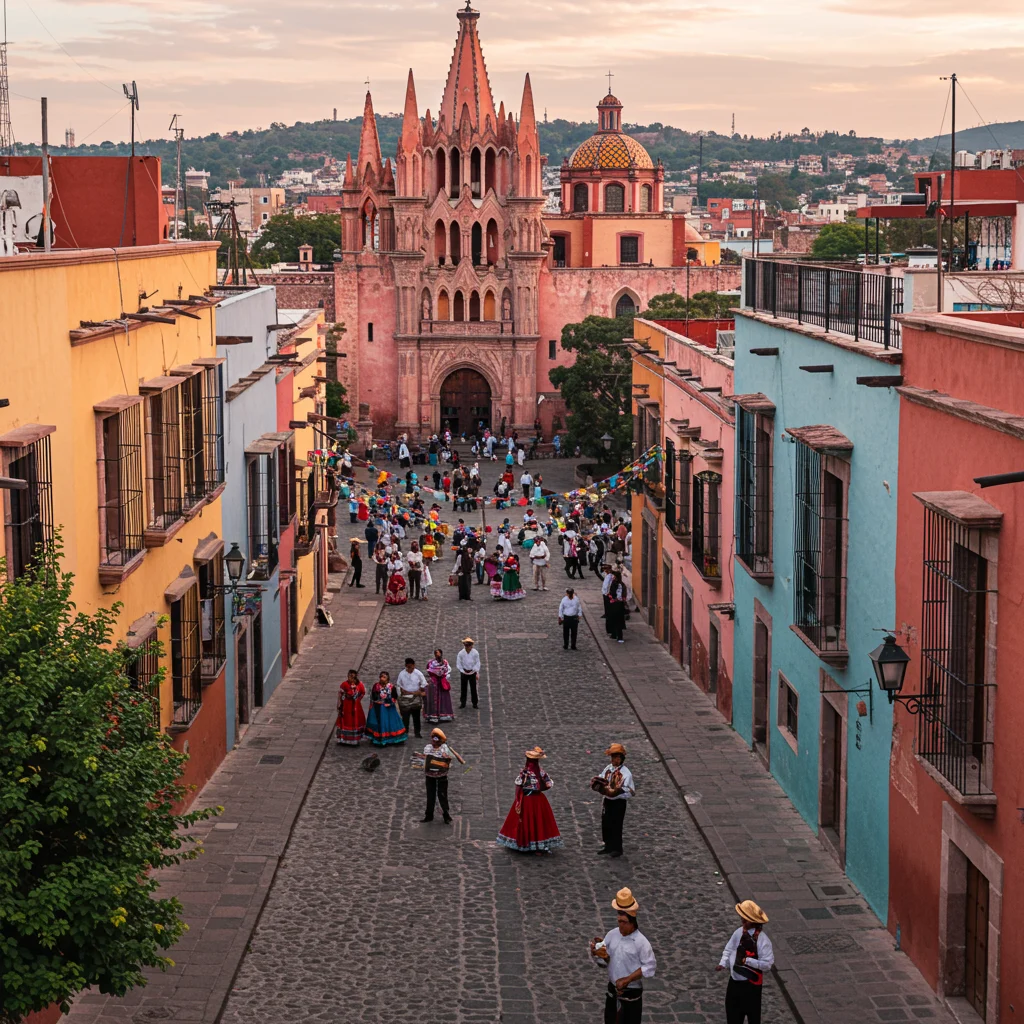
This recognition reflects the city’s significance as a crossroads of cultures and ideas, where Spanish colonial influences merged with indigenous traditions. The result is a visually stunning and culturally rich urban landscape, celebrated worldwide for its authenticity and beauty.
Overview of the City’s Historical Significance
San Miguel de Allende’s history stretches back to the 16th century, when it was founded as a frontier town along the Silver Route. Its strategic location made it a hub for commerce, religion, and revolutionary ideas. The city played a pivotal role in the Mexican War of Independence, serving as the birthplace of national hero Ignacio Allende.

Throughout the centuries, San Miguel has attracted artists, writers, and visionaries, each leaving their mark on its evolving identity. The result is a city that honors its past while embracing a vibrant present.
Planning Your Walking Tour: Essential Tips
Careful planning enhances any walking tour, especially in a city as layered and lively as San Miguel de Allende. We recommend considering the time of year, packing smartly, and learning about local customs to make the most of your visit.
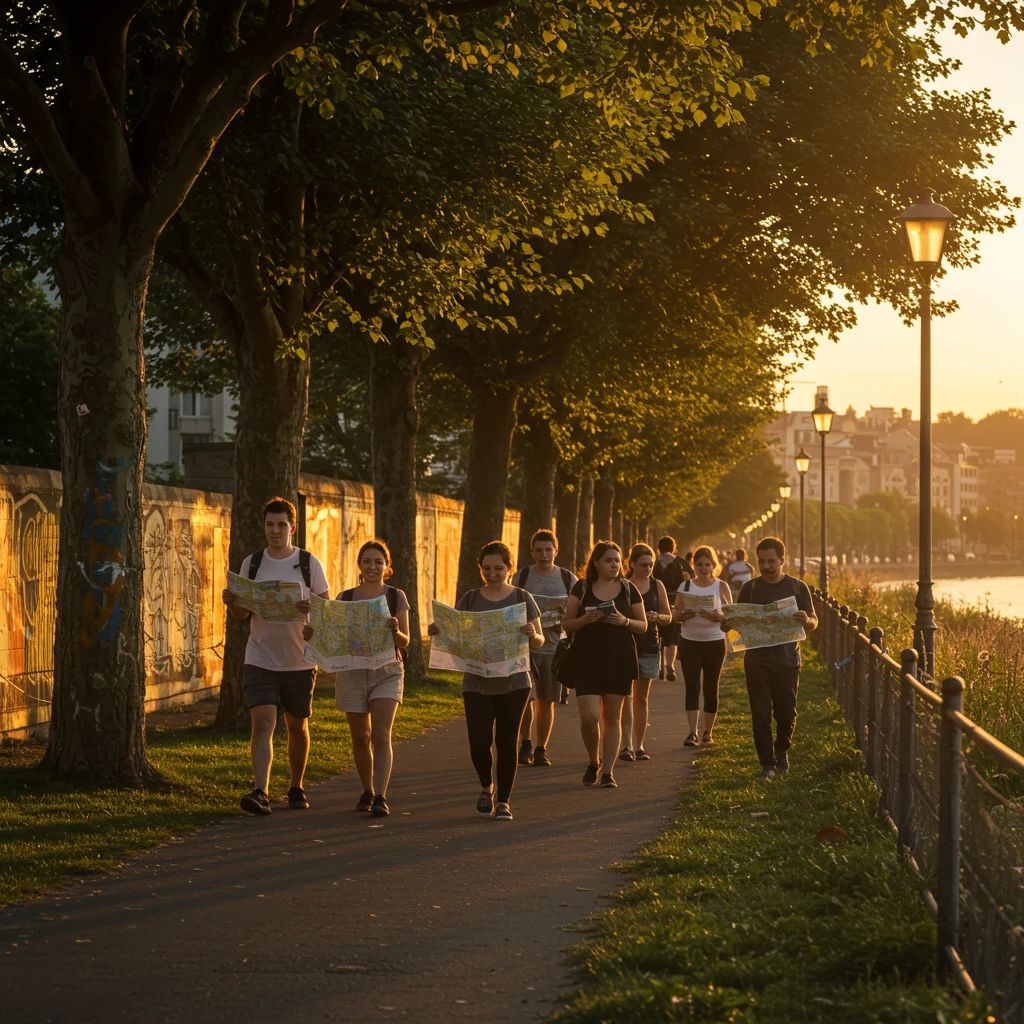
When Is the Best Time to Visit San Miguel de Allende?
The city enjoys a mild, semi-arid climate, making it pleasant year-round. However, the best months for a walking tour are from October to April, when temperatures are comfortable and rainfall is minimal. During these months, the city bursts with festivals, art events, and outdoor activities.
If you prefer quieter streets, plan your visit during weekdays or outside major holidays. Early mornings and late afternoons also offer cooler temperatures and golden light for photography.
How to Prepare for Your Walking Tour
Preparation is key for an enjoyable experience. We recommend researching the tour route in advance, confirming opening hours for museums and attractions, and booking tickets or guides if needed. Staying hydrated and wearing comfortable shoes will keep you energized throughout the day.
For those who want to maximize their experience, it can be helpful to review sample itineraries or even plan your trip with reputable tour providers.
What to Pack for a Comfortable Tour?
Packing light but thoughtfully will enhance your comfort. Essentials include:
- Comfortable walking shoes with good grip
- A wide-brimmed hat or cap for sun protection
- Refillable water bottle
- Lightweight, breathable clothing
- Sunscreen and sunglasses
- A camera or smartphone for photos
- A small bag for personal items and purchases
Safety Tips for Walking in San Miguel de Allende
San Miguel de Allende is generally considered a safe city for visitors. Still, it’s wise to follow basic safety precautions. Stick to well-lit streets at night, keep valuables secure, and be mindful of uneven cobblestones that can be slippery after rain.
If you’re traveling with children or those with mobility challenges, plan routes that avoid steep hills or busy intersections.
Understanding Local Etiquette and Customs
Respect for local customs will enrich your interactions. Greet shopkeepers and residents with a polite “Buenos días” or “Buenas tardes.” Dress modestly, especially when entering churches or religious sites. When photographing people, always ask for permission.
Participating in local traditions with curiosity and humility opens doors to meaningful cultural exchanges.
Starting Point: El Jardín Principal (Main Square)
El Jardín Principal, the city’s vibrant main square, serves as the heart of social life. Shaded by manicured laurel trees and bordered by elegant colonnades, this plaza is the ideal starting point for any walking tour.
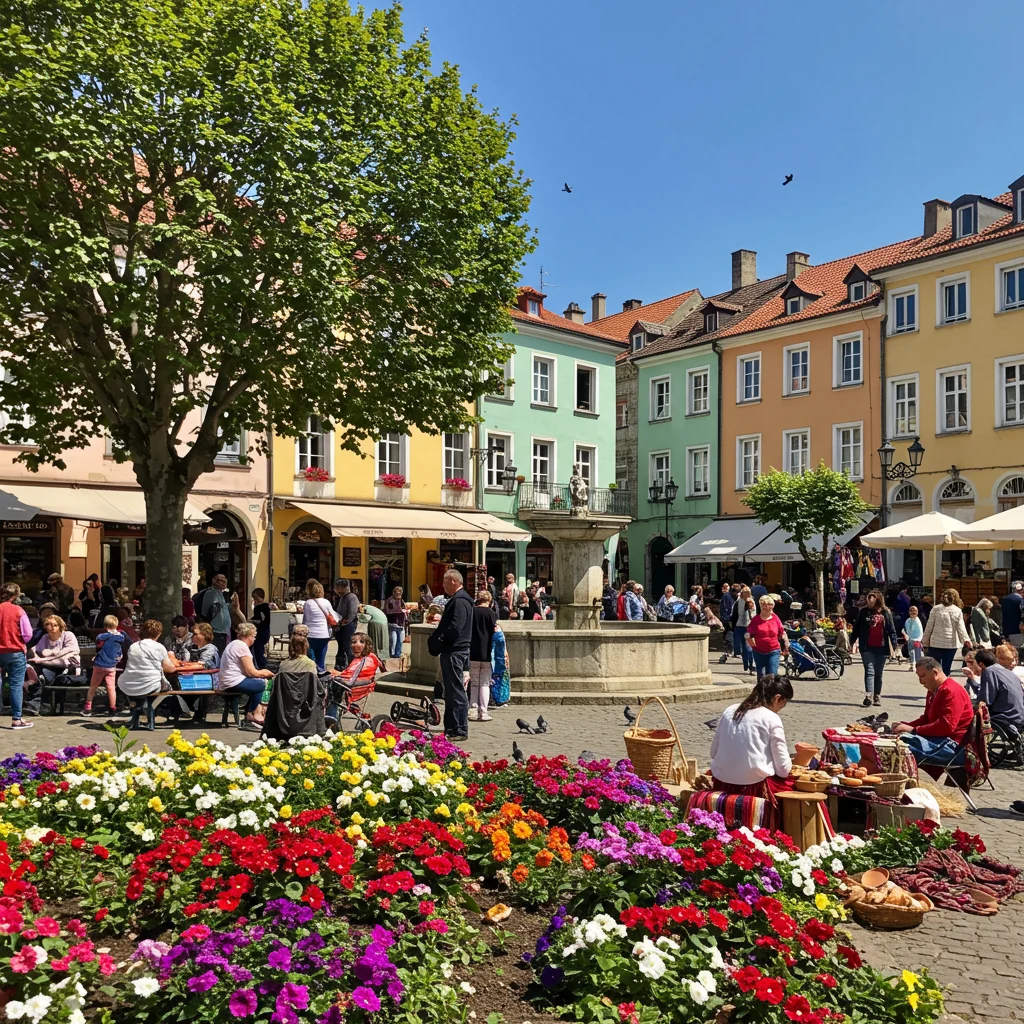
The square buzzes with laughter, music, and the rhythmic clatter of horse-drawn carriages. Here, both locals and visitors gather for conversation, relaxation, and celebration.
History and Importance of El Jardín
El Jardín has anchored civic life since the city’s earliest days. Originally a gathering space for merchants and townspeople, it evolved into a center for festivals, political events, and leisurely afternoons. Its strategic location, facing the iconic La Parroquia, underscores its significance.
The square’s lush landscaping and ornate wrought-iron benches invite us to pause and soak in the city’s timeless atmosphere.
Events and Activities at the Main Square
Throughout the year, El Jardín hosts a lively array of events—from mariachi performances to colorful parades and artisan markets. On weekends, you might encounter folk dancers swirling in traditional costumes or children chasing balloons through the dappled sunlight.
Seasonal festivals transform the plaza into a stage for fireworks, music, and communal joy, making each visit unique.
La Parroquia de San Miguel Arcángel: The Iconic Pink Church
No landmark defines San Miguel de Allende more than the La Parroquia de San Miguel Arcángel. Its soaring pink spires, inspired by European cathedrals, rise dramatically above the main square, drawing visitors from around the globe.
![]()
The church’s façade glows at sunrise and sunset, its neo-Gothic curves and intricate stonework a marvel to behold.
Architectural Features of La Parroquia
La Parroquia’s architecture is a fusion of styles, with its most striking feature being the ornate pink limestone façade designed by indigenous architect Zeferino Gutiérrez in the late 19th century. The spires, said to be inspired by postcards of European cathedrals, create a sense of grandeur and romance.
Stained-glass windows filter sunlight into a kaleidoscope of colors, while carved angels and saints watch over the entrance.
Legends and Stories Behind the Church
Stories swirl around La Parroquia, including legends of hidden tunnels and miraculous apparitions. Some say the church was built on sacred indigenous ground, while others recount tales of secret meetings during the independence movement.
These narratives add layers of intrigue to the church’s already magnetic presence.
Can You Visit the Interior? What to Expect
Visitors are welcome to enter the church, where they’ll find soaring columns, gilded altars, and quiet chapels for reflection. The atmosphere is reverent, with the scent of incense lingering in the air and the sound of choirs echoing softly.
Photography is allowed in most areas, but it’s important to be respectful, especially during services or private ceremonies.
Exploring the Historic Streets: Callejón del Beso and More
San Miguel’s streets are a delight to wander, with narrow alleys and sunlit boulevards revealing new surprises at every turn. The Callejón del Beso (Alley of the Kiss) is particularly famous for its romantic legend and photogenic charm.

As we walk, we pass hand-painted doors, blooming bougainvillea, and balconies adorned with wrought iron.
What Are the Most Charming Streets to Walk?
Beyond Callejón del Beso, we recommend strolling along Calle Aldama, renowned for its picturesque views of La Parroquia, and Calle Recreo, lined with elegant mansions and art galleries. Each street offers a unique perspective on the city’s architectural and cultural heritage.
Venturing into quieter side streets often leads to unexpected discoveries, such as tiny chapels or hidden fountains.
Street Art and Murals: Where to Find Them?
While colonial elegance dominates the cityscape, San Miguel also boasts a vibrant contemporary art scene. Colorful murals adorn walls in neighborhoods like Guadalupe, where artists use vivid imagery to celebrate local identity and social themes.
These works of art offer a modern counterpoint to the city’s historical landmarks, inviting us to reflect on the evolving spirit of San Miguel.
Colonial Architecture: A Visual Journey
San Miguel de Allende’s colonial architecture is a feast for the eyes, with every block showcasing a harmonious blend of Spanish and indigenous influences. Ornate facades, arched colonnades, and hand-carved wooden doors create a sense of timeless elegance.
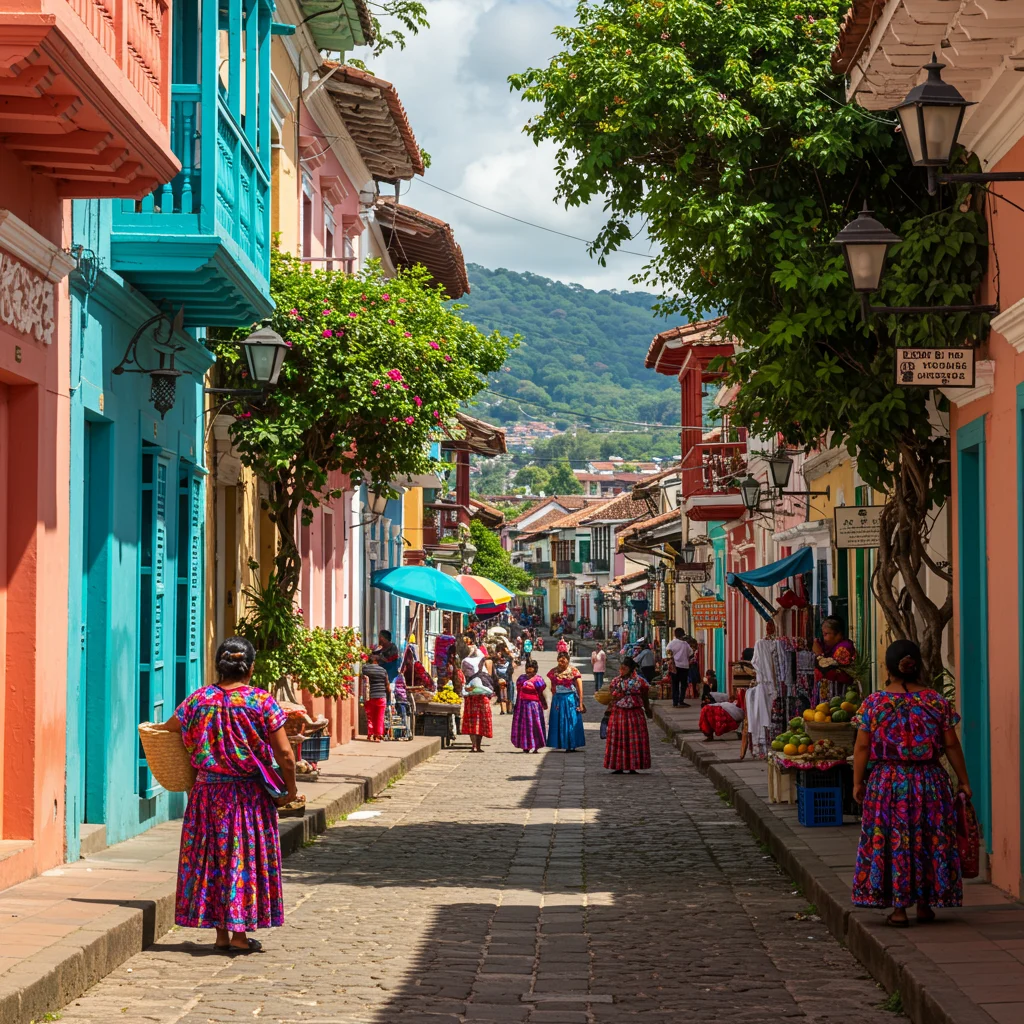
The city’s distinctive color palette—ochre, terracotta, and rose—glows beneath the Mexican sun, accentuating every cornice and balcony.
Key Features of Colonial Buildings
Typical features include thick adobe walls, interior courtyards, wrought-iron railings, and intricately tiled floors. Many buildings feature rooftop terraces with sweeping views of the city and distant mountains.
These architectural details not only reflect aesthetic preferences but also practical considerations for climate and privacy.
Restoration and Preservation Efforts
Preserving San Miguel’s architectural heritage is a community priority. Local organizations and government agencies collaborate to restore historic buildings, using traditional materials and techniques whenever possible.
These efforts protect the city’s character for future generations and support a thriving tourism economy.
Casa de Allende Museum: Birthplace of a Hero
The Casa de Allende Museum stands as a testament to the city’s revolutionary spirit. Once the family home of Ignacio Allende, this stately mansion now welcomes visitors to explore its rich history.
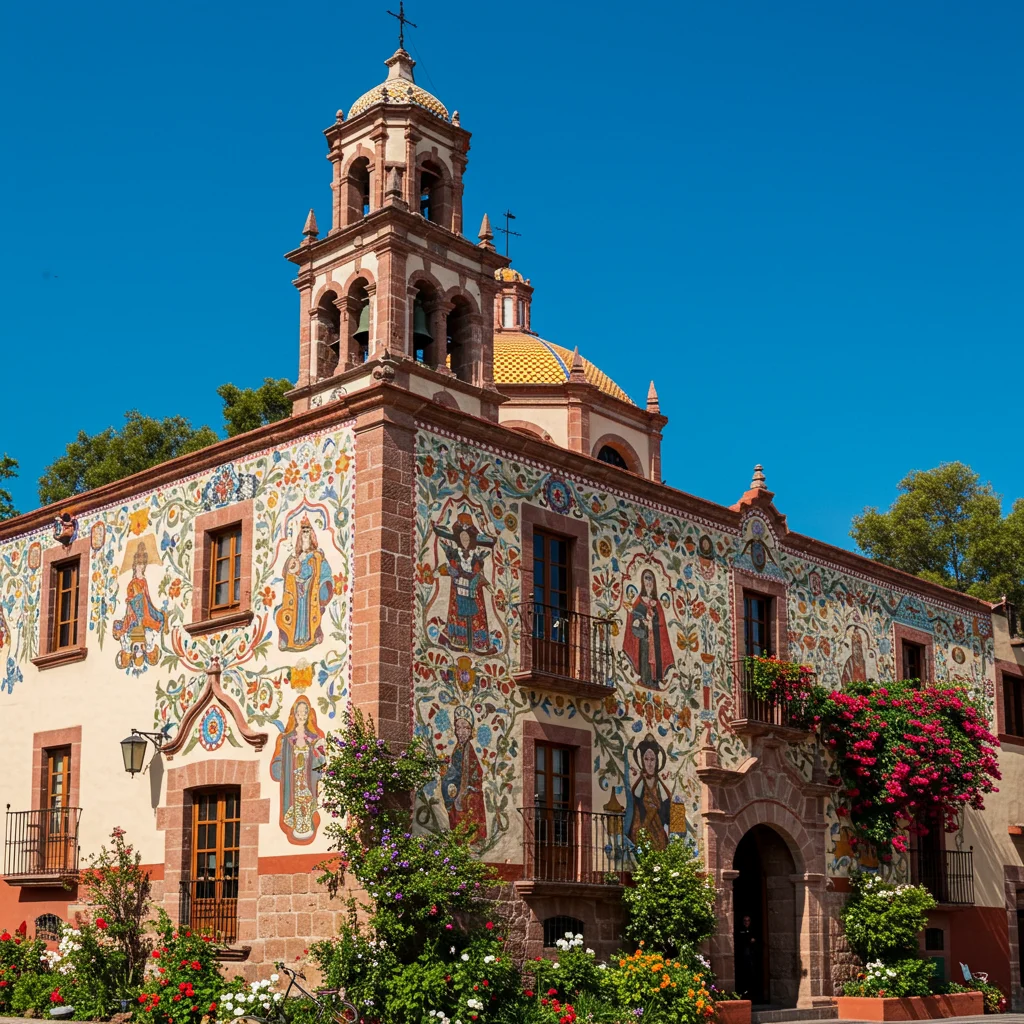
The museum is conveniently located near the main square, making it an essential stop on any historical walking tour.
Who Was Ignacio Allende?
Ignacio Allende was a military leader and key figure in the early stages of Mexico’s fight for independence. Born in San Miguel, he joined forces with Miguel Hidalgo and led the first insurgent army against Spanish rule.
His legacy endures in the city’s name and in the hearts of those who value freedom and justice.
What Can You See Inside the Museum?
Inside Casa de Allende, visitors can view period furnishings, personal artifacts, and documents that trace the life and impact of this national hero. Exhibits detail the social and political climate of the time, providing context for Allende’s actions.
Interactive displays and guided tours help bring history to life, making the museum both educational and inspiring.
Museo Histórico de San Miguel de Allende: A Deep Dive
For those seeking a comprehensive understanding of the city’s past, the Museo Histórico de San Miguel de Allende offers an in-depth exploration of local history, art, and culture.

The museum is housed in a beautifully restored colonial building, with exhibits spread across multiple galleries.
Permanant Exhibitions
Permanent exhibitions cover topics such as indigenous cultures, the colonial era, and the independence movement. Artifacts range from ancient pottery to 19th-century manuscripts, each piece shedding light on a different chapter of the city’s story.
Detailed models and maps help visitors visualize the city’s evolution over time.
Temporary Exhibits and Events
The museum regularly hosts temporary exhibits featuring contemporary artists, historical themes, and community projects. Special events, lectures, and workshops provide opportunities for deeper engagement with local culture.
Checking the museum’s schedule in advance can help you catch unique exhibitions during your visit.
Templo de San Francisco: Baroque Masterpiece
One of San Miguel’s most exquisite churches, the Templo de San Francisco stands as a masterpiece of baroque design. Its ornate façade, adorned with intricate stone carvings, draws admirers from near and far.

The church’s peaceful interior offers a respite from the city’s lively streets, inviting quiet contemplation.
Baroque Architecture Explained
Baroque architecture is characterized by dramatic contrasts, elaborate ornamentation, and a sense of movement. The Templo de San Francisco exemplifies this style, with swirling columns, sculpted angels, and lavish altars.
This aesthetic aims to evoke emotion and awe, creating a spiritual experience for all who enter.
Religious Art and Sculptures
The church’s interior features an impressive collection of religious art, including gilded retablos, painted ceilings, and life-sized statues of saints. These works reflect both Spanish and indigenous influences, blending traditions in unexpected ways.
Visitors often remark on the sense of serenity that fills the space, enhanced by the soft glow of candlelight and the scent of fresh flowers.
Mercado de Artesanías: Discover Local Crafts
San Miguel de Allende’s Mercado de Artesanías is a paradise for lovers of handmade crafts. This bustling market showcases the creativity and skill of local artisans, offering everything from pottery and textiles to jewelry and folk art.

Wandering through its stalls, we’re greeted by the vibrant colors of woven baskets, embroidered garments, and painted ceramics.
What Handicrafts Can You Find?
The market offers a wide selection of traditional Mexican handicrafts, including:
- Talavera pottery
- Handwoven rugs and shawls
- Silver and beaded jewelry
- Wooden toys and masks
- Decorative tinwork
Each item tells a story, reflecting the region’s diverse cultural heritage.
Supporting Local Artisans
Purchasing directly from artisans supports the local economy and helps preserve traditional crafts. Many vendors are happy to share the history and techniques behind their creations, offering a unique opportunity for cultural exchange.
As we covered in our post on Mexico’s hidden beach gems, supporting local communities is a meaningful way to make your travels more impactful.
Teatro Ángela Peralta: Cultural Heartbeat
The Teatro Ángela Peralta is a beloved cultural institution, hosting concerts, plays, and festivals in a beautifully restored 19th-century building. Named after the famed Mexican soprano, the theater is a hub for artistic expression and community gatherings.
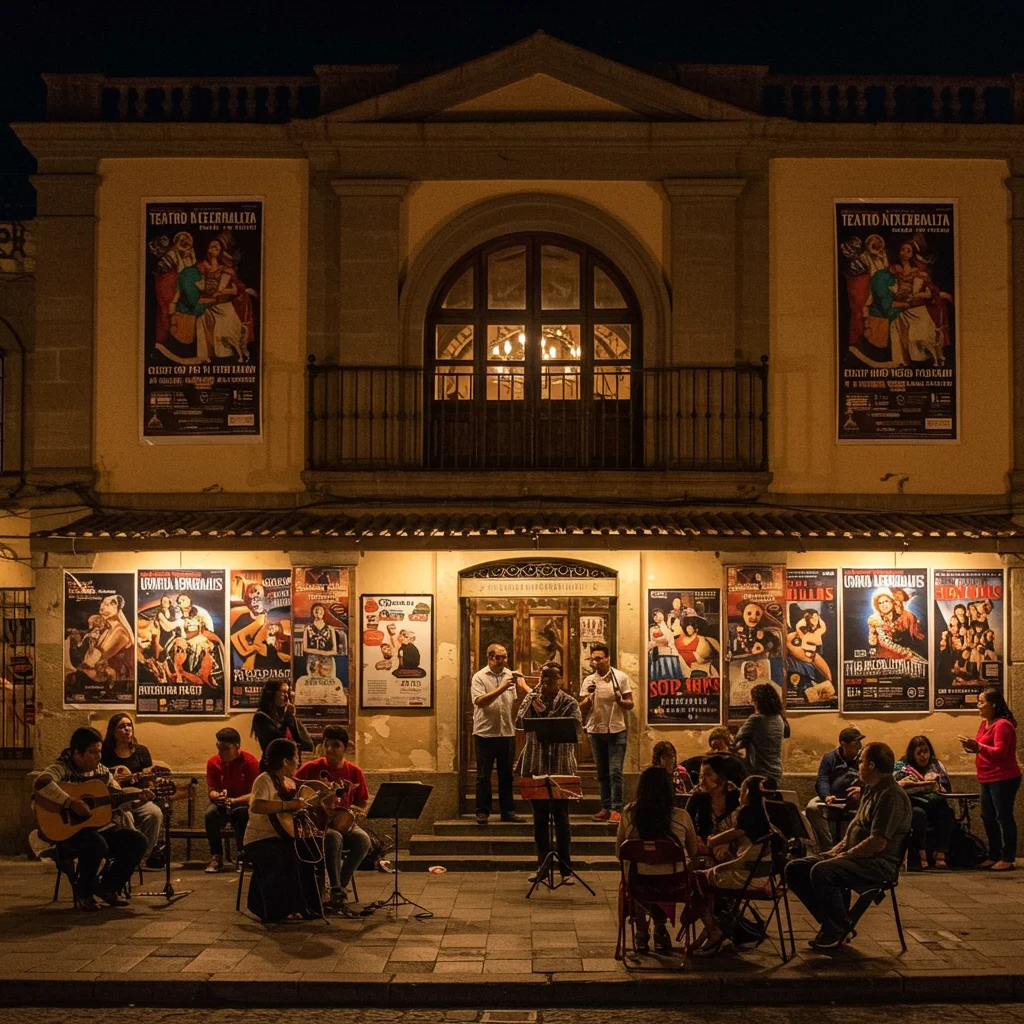
Its elegant neoclassical façade and ornate interior transport visitors to a bygone era of grandeur and creativity.
History of the Theatre
Originally opened in 1873, the theater has undergone several transformations, surviving fires, neglect, and eventual restoration. It has welcomed generations of performers and audiences, serving as a beacon for the city’s artistic community.
The theater’s resilience mirrors the enduring spirit of San Miguel itself.
Events and Performances to Attend
Teatro Ángela Peralta’s calendar is filled with operas, chamber music, dance performances, and film screenings. Annual festivals, such as the International Jazz & Blues Festival, draw visitors from across the globe.
Attending a performance here is a chance to experience the city’s creative pulse and connect with its vibrant arts scene.
Instituto Allende: Center for Arts and Education
The Instituto Allende has long been a magnet for artists and students from around the world. Housed in a grand colonial mansion, the institute offers a wide array of courses, workshops, and cultural events.
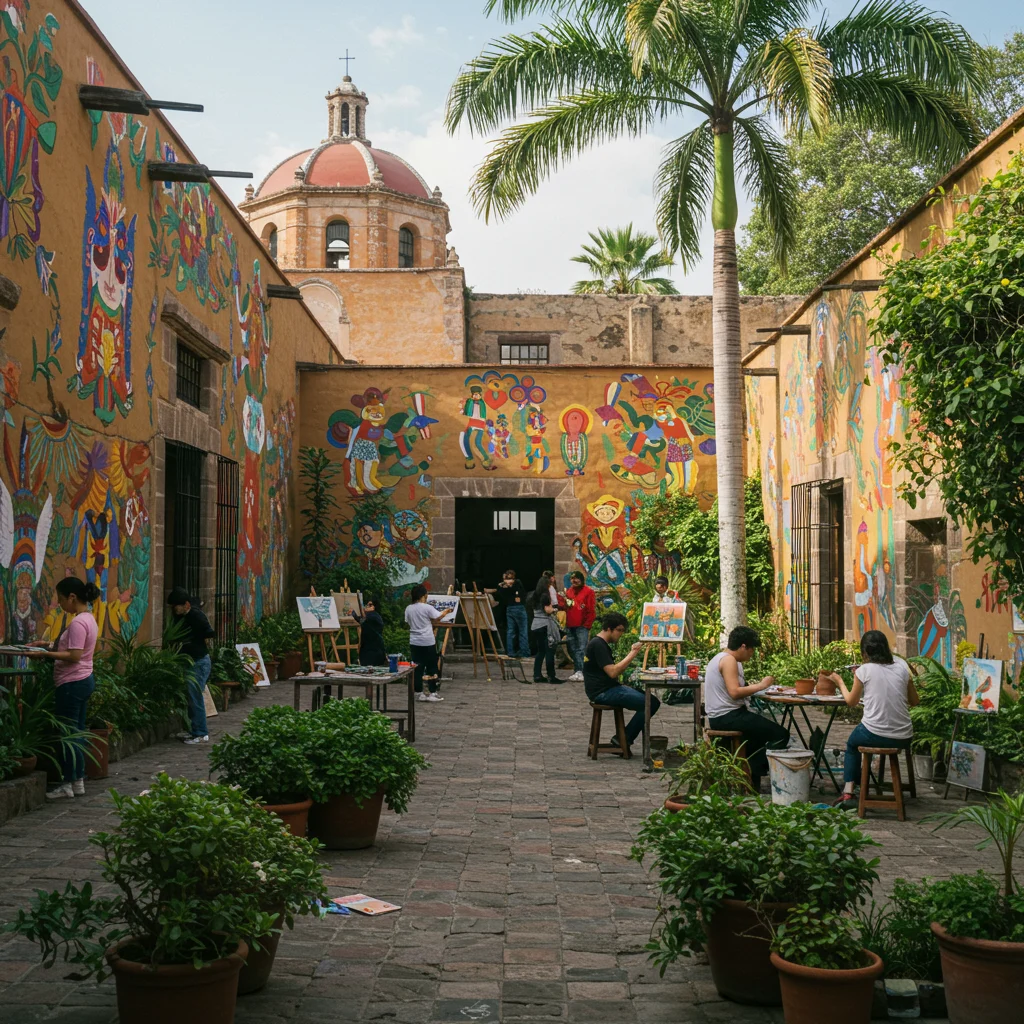
Its leafy courtyards and sunlit studios provide an inspiring setting for learning and creativity.
Courses and Workshops Available
The institute offers classes in painting, sculpture, photography, ceramics, and traditional Mexican crafts. Short-term workshops and intensive programs cater to beginners and experienced artists alike.
Participants benefit from expert instruction, supportive peers, and access to well-equipped studios.
Art Exhibitions and Community Events
Throughout the year, the Instituto Allende hosts art exhibitions, lectures, and community events. These gatherings foster dialogue between local and international artists, enriching the city’s dynamic cultural life.
Visitors are welcome to attend openings and explore the galleries, which showcase both student and professional work.
Fábrica La Aurora: From Textile Factory to Art Hub
Once a thriving textile mill, Fábrica La Aurora has been transformed into an innovative art and design center. The sprawling complex houses galleries, studios, shops, and cafés, all set within the original industrial architecture.

Sunlight streams through tall windows, illuminating contemporary paintings, sculptures, and handcrafted furniture.
History of La Aurora
Founded in 1902, the factory produced textiles for nearly a century before closing its doors. In the early 2000s, local artists and entrepreneurs reimagined the space as a creative incubator, preserving its industrial heritage while infusing it with new energy.
Today, Fábrica La Aurora stands as a testament to the city’s adaptability and artistic vision.
Art Galleries and Studios to Visit
The complex features a diverse array of galleries, ranging from contemporary Mexican art to traditional crafts. Visitors can meet resident artists, watch demonstrations, and purchase original works.
Cafés and boutiques provide a relaxed setting for conversation and reflection between gallery visits.
Walking Through San Miguel’s Colorful Markets
Markets are the lifeblood of San Miguel de Allende, bursting with color, aroma, and energy. A stroll through these bustling spaces offers a sensory feast and a window into daily life.
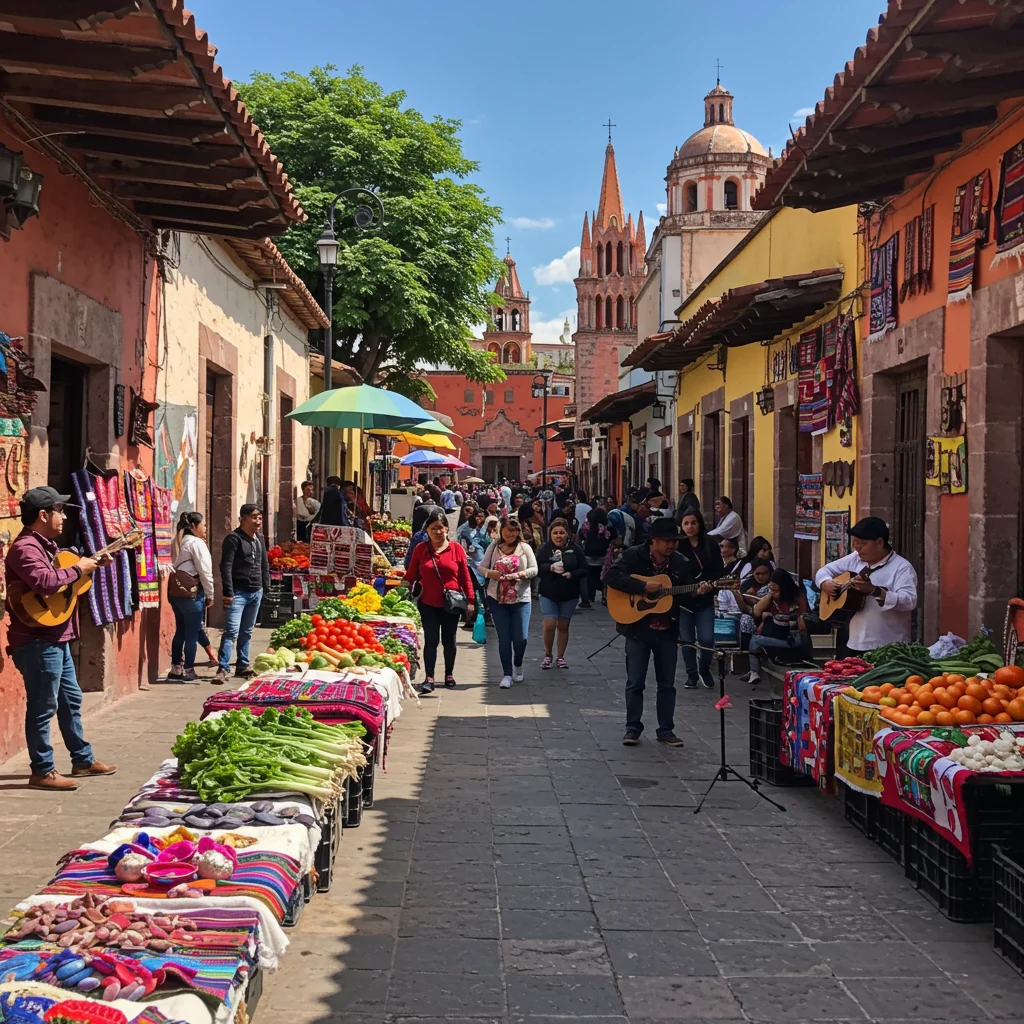
Vendors call out their wares, from ripe fruit and fragrant spices to hand-stitched textiles and pottery.
Mercado Ignacio Ramírez: What to Expect
The Mercado Ignacio Ramírez is the city’s main public market, offering a dizzying array of goods. Here, we can sample fresh produce, browse household items, and admire local crafts.
The market’s lively atmosphere is enhanced by the hum of conversation and the sizzle of food stalls preparing regional specialties.
Sampling Local Foods and Snacks
No visit is complete without tasting some of the market’s culinary delights. We recommend trying tamales, gorditas, and fresh fruit juices. For a deeper dive into the region’s flavors, our guide to Mexican food highlights must-try dishes and where to find them.
Sharing a meal at the market is a chance to connect with local traditions and savor the city’s gastronomic heritage.
Plaza Cívica: Political and Social Center
The Plaza Cívica serves as a focal point for political discourse and community gatherings. Framed by stately buildings and leafy trees, the plaza has witnessed key moments in the city’s story.
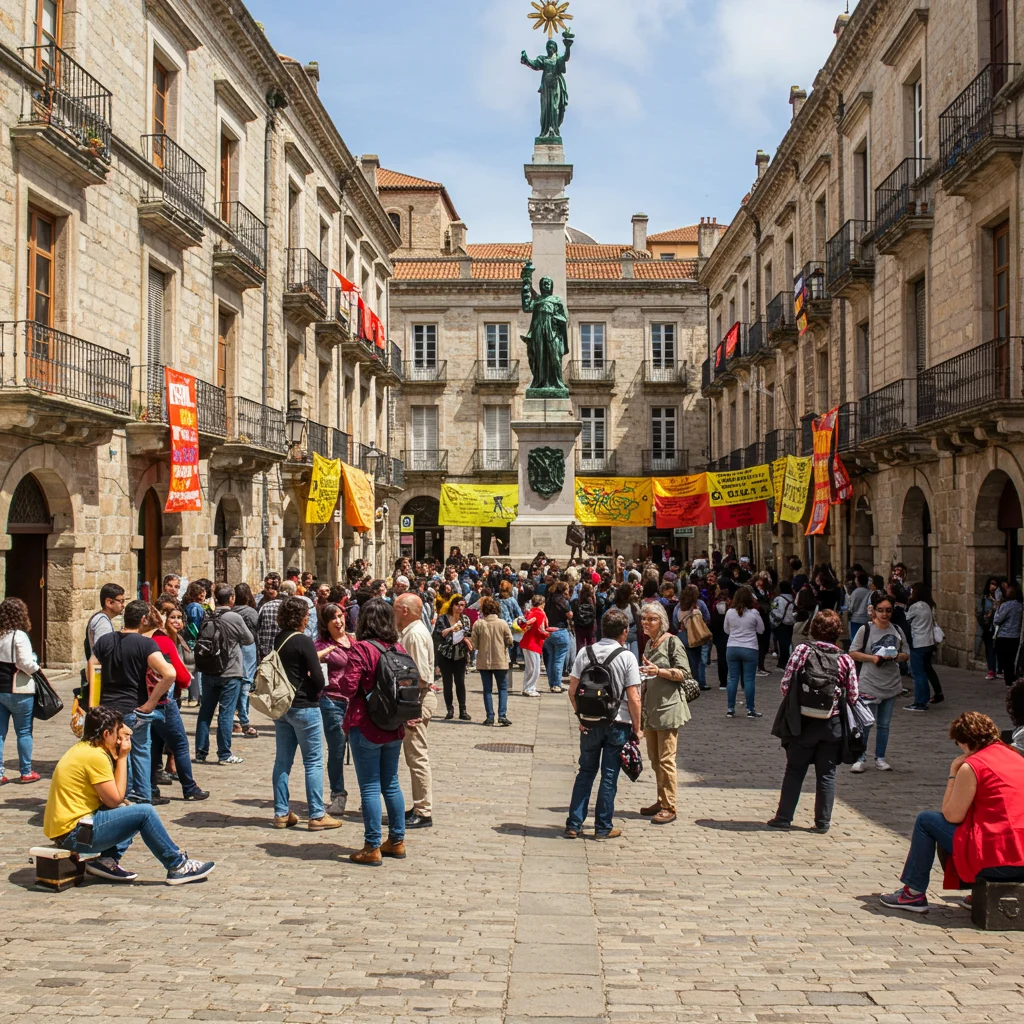
Its spacious layout and prominent monuments make it a natural gathering place for public events and celebrations.
Statues and Monuments of the Plaza
The plaza features statues honoring national heroes, including a striking equestrian monument to Ignacio Allende. Other sculptures pay tribute to local leaders and cultural figures.
These monuments invite reflection on the city’s complex history and enduring values.
Historic Events That Shaped the Plaza
Over the centuries, the Plaza Cívica has hosted political rallies, independence celebrations, and public demonstrations. Its role as a civic stage underscores the importance of community engagement in San Miguel de Allende.
Today, the plaza remains a lively venue for concerts, festivals, and everyday conversation.
Sanctuary of Atotonilco: The Sistine Chapel of Mexico
Just outside San Miguel de Allende lies the Sanctuary of Atotonilco, a UNESCO-listed church renowned for its breathtaking murals and spiritual significance. Often called the “Sistine Chapel of Mexico,” it’s a must-see for art lovers and history enthusiasts alike.
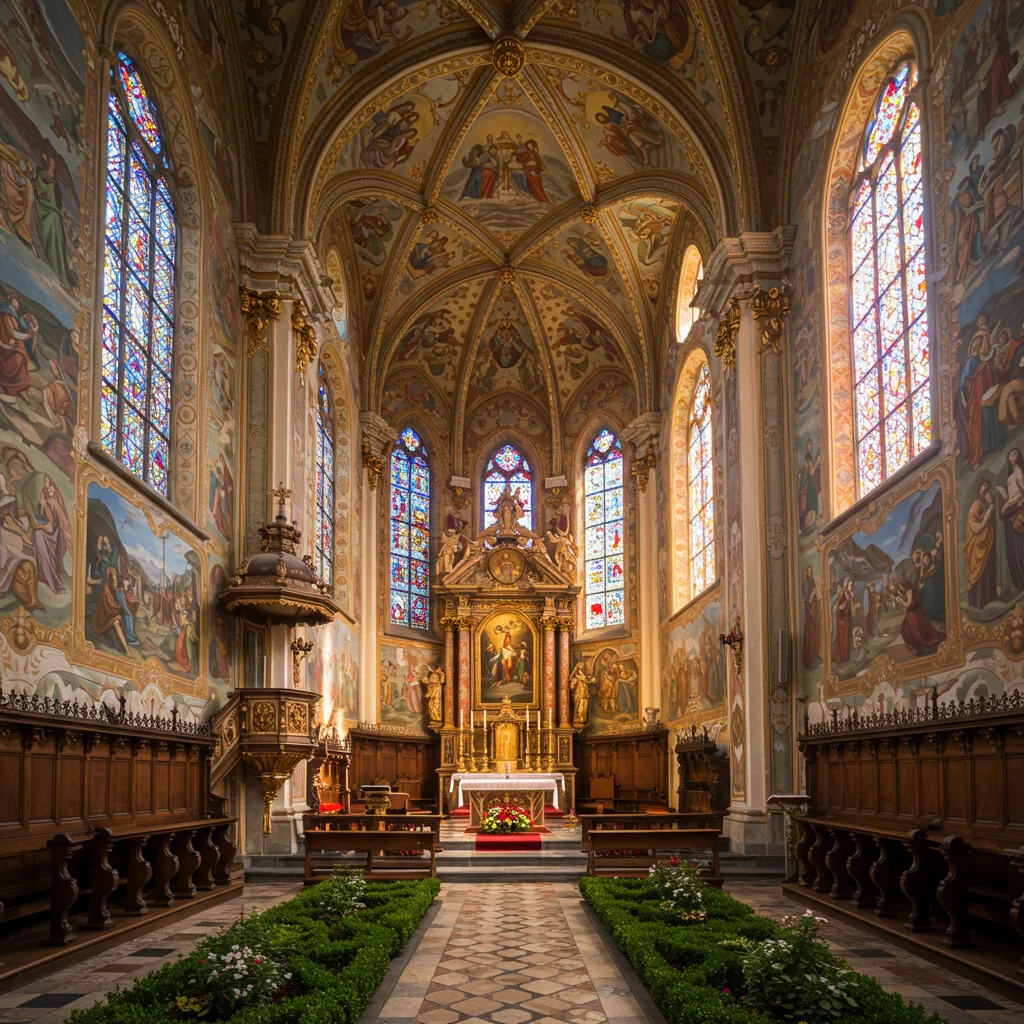
The sanctuary’s humble exterior belies the splendor within, where every inch is covered in vivid frescoes depicting biblical scenes.
Why Is Atotonilco Significant?
Atotonilco played a pivotal role in the religious and cultural life of the region. Its elaborate murals, painted over decades by local artists, illustrate both Catholic doctrine and indigenous symbolism.
The site also served as a rallying point during the independence movement, further cementing its place in national history.
How to Visit from San Miguel de Allende
The sanctuary is located about 14 kilometers from the city center. Visitors can reach it by taxi, bus, or guided tour. Many walking tours include an optional excursion to Atotonilco, offering transportation and expert commentary.
Be sure to check opening hours and dress modestly, as this remains an active place of worship.
Festivals and Traditions: Experiencing Local Culture
San Miguel de Allende is famous for its exuberant festivals and traditions. Throughout the year, the city comes alive with music, dance, processions, and fireworks, offering visitors an immersive cultural experience.
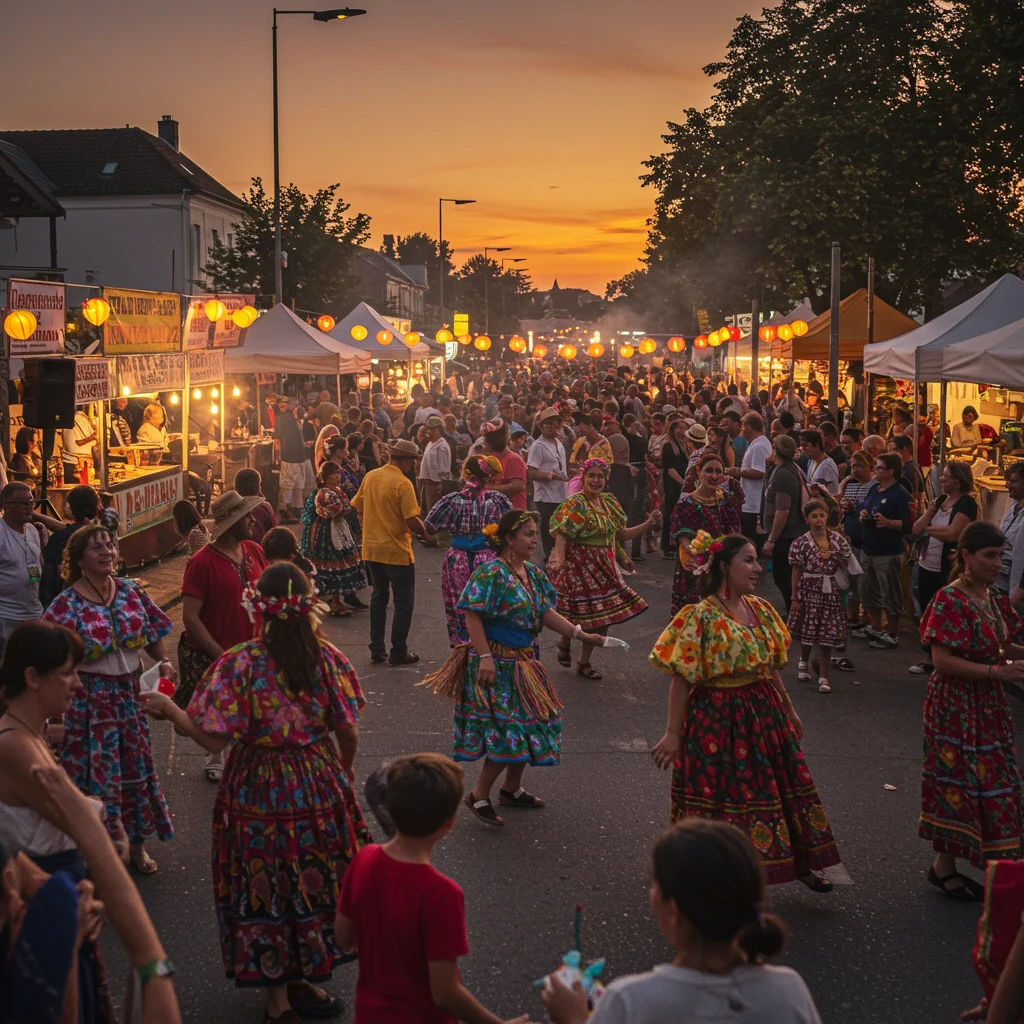
Participating in these celebrations provides a deeper understanding of local identity and values.
Major Annual Festivals
Notable events include:
- Semana Santa (Holy Week), featuring dramatic religious processions
- La Fiesta de San Miguel Arcángel, honoring the city’s patron saint
- El Grito de Independencia, commemorating Mexico’s independence
- International Jazz & Blues Festival
Each festival offers its own unique sights, sounds, and flavors, making every visit memorable.
Traditional Parades and Processions
Parades are a highlight of San Miguel’s festive calendar. Giant puppets called mojigangas dance through the streets, while costumed performers reenact historical events. Religious processions, accompanied by incense and solemn music, create an atmosphere of reverence and unity.
As experts often say:
“Festivals are the heartbeat of San Miguel de Allende, uniting past and present in a joyful celebration of community and tradition.”
Gastronomy: Where to Eat Along Your Walk
San Miguel de Allende’s culinary scene is as diverse as its architecture. From street food stalls to elegant restaurants, the city offers something for every palate. We recommend sampling both regional specialties and contemporary interpretations of Mexican cuisine.

The aroma of roasting chiles and freshly baked bread lingers in the air, tempting passersby at every turn.
Top Restaurants and Cafés Near Main Attractions
Popular dining spots near the main square include:
- Café de la Parroquia, known for its panoramic views
- Lavanda Café, famous for its artisanal coffee and pastries
- The Rooftop, offering creative cocktails and sweeping vistas
- Hecho en Mexico, a favorite for live music and local flavors
Many restaurants feature outdoor seating, perfect for people-watching and soaking in the city’s lively ambiance.
Must-Try Local Dishes
Regional specialties include enchiladas mineras, chiles en nogada, and tacos al pastor. Don’t miss the chance to try atole or aguas frescas from market vendors.
For more inspiration, our article on Mexican food features recommendations that will satisfy any food lover.
Hidden Courtyards and Secret Gardens
Tucked behind unassuming facades, San Miguel’s hidden courtyards and gardens offer tranquil escapes from the city’s bustle. Many colonial homes, restaurants, and hotels feature lush inner patios filled with fountains, flowers, and climbing vines.
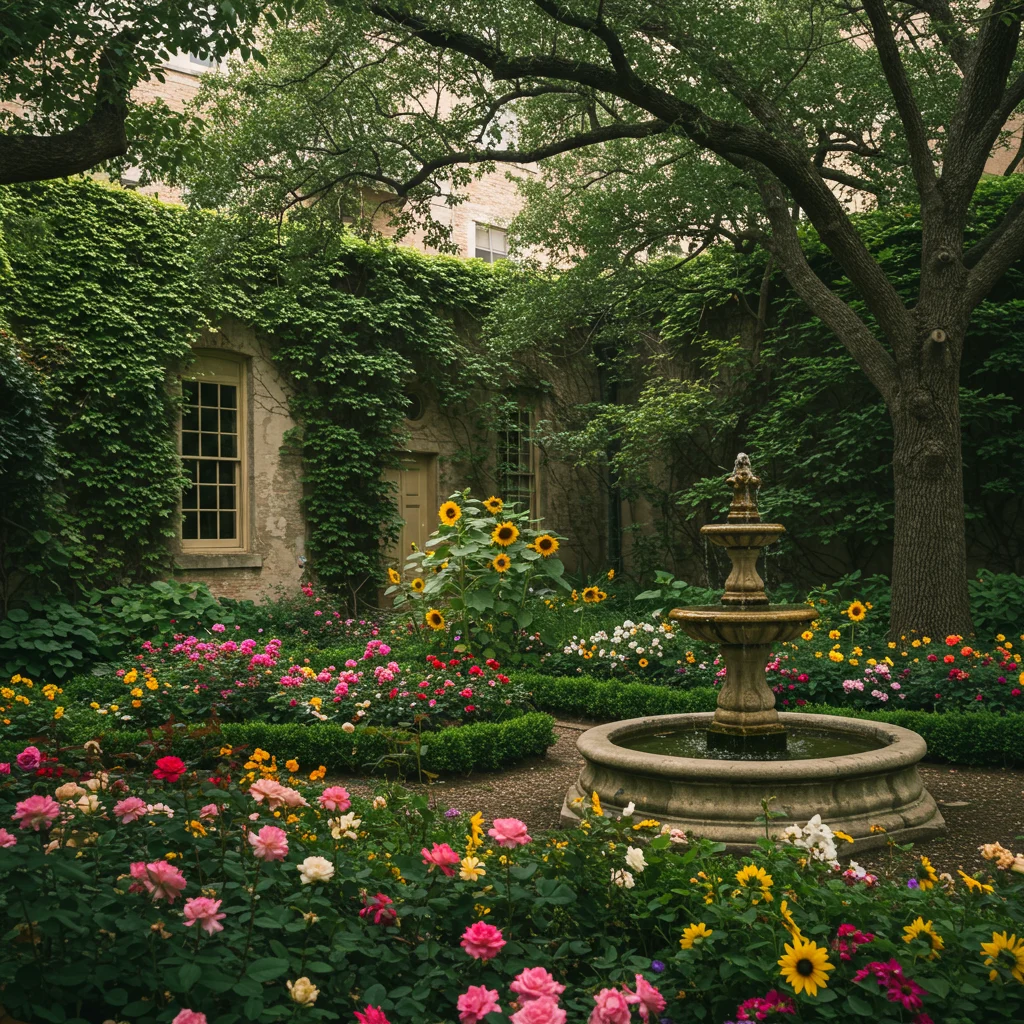
These secluded spaces are ideal for quiet reflection, intimate conversation, or a leisurely meal.
Where to Find San Miguel’s Best Courtyards?
Some of the most enchanting courtyards can be found in boutique hotels like Casa de Sierra Nevada and art spaces such as Instituto Allende. Cafés and galleries often welcome visitors to linger in their green oases, where the sound of trickling water and birdsong creates a serene atmosphere.
As we explored in our discussion of Condesa’s urban gardens and patios, these hidden gems are essential for experiencing the soul of a city.
Botanical Garden (El Charco del Ingenio): Nature Meets Culture
On the city’s outskirts lies El Charco del Ingenio, a vast botanical garden that blends ecological conservation with cultural heritage. The garden showcases native plants, dramatic canyons, and tranquil ponds, offering a peaceful retreat for nature lovers.

Walking its trails, we’re surrounded by the scent of wild sage and the sounds of native birds.
Highlights of the Botanical Garden
El Charco del Ingenio features themed gardens, cactus collections, and interpretive exhibits on local ecosystems. The garden’s viewpoints offer sweeping vistas of the city and surrounding countryside.
Educational programs and art installations further enrich the visitor experience.
Guided Nature Walks and Tours
Guided walks are available for those interested in learning more about the region’s flora and fauna. Knowledgeable guides share insights into traditional medicinal plants, conservation efforts, and the garden’s cultural significance.
Advance reservations are recommended, especially during peak seasons.
Artisan Workshops: Hands-On Cultural Experiences
Participating in an artisan workshop is a memorable way to connect with San Miguel’s creative spirit. Local studios offer classes in pottery, weaving, painting, and jewelry making, welcoming visitors of all skill levels.
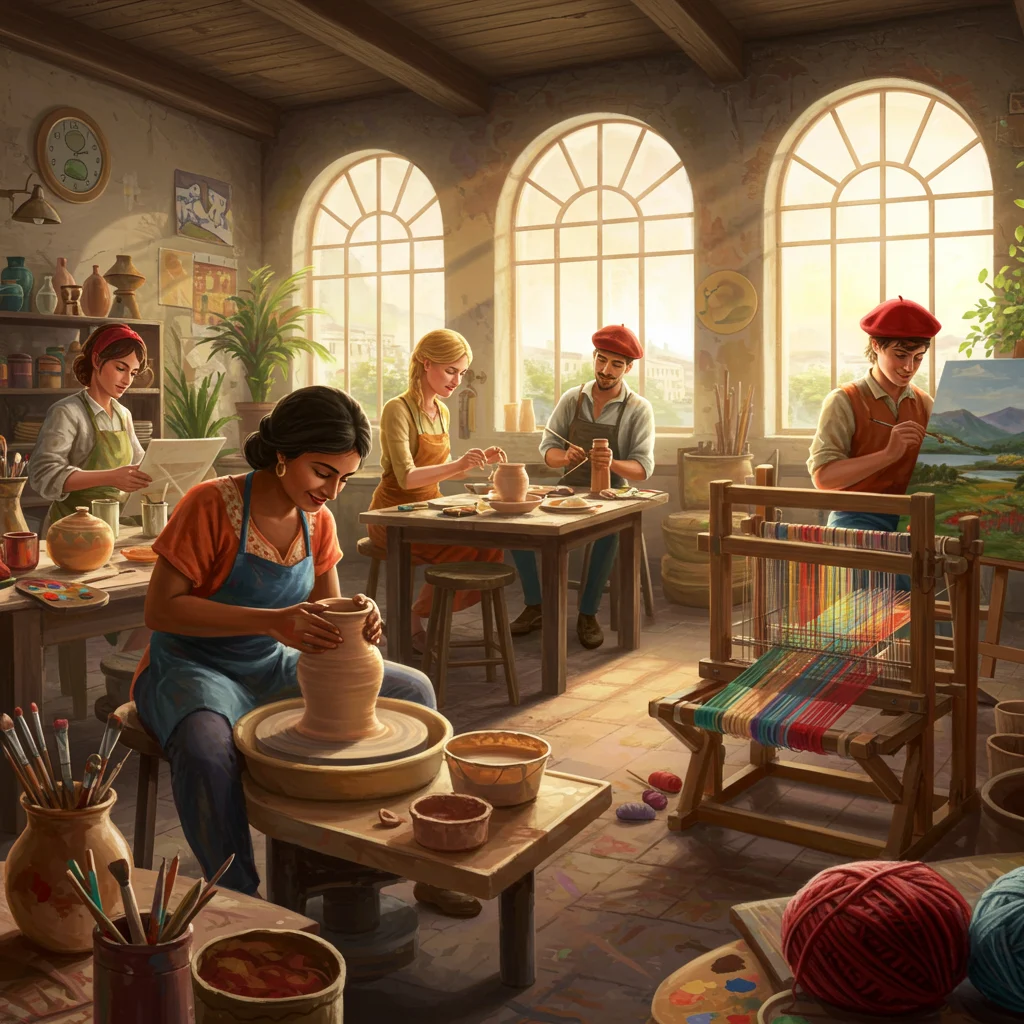
These immersive experiences foster appreciation for the craftsmanship that defines the city’s identity.
Pottery, Weaving, and Jewelry Making
Workshops often begin with a demonstration by master artisans, followed by hands-on practice. Participants can create their own ceramic bowls, woven textiles, or silver pendants using traditional techniques.
Finished pieces serve as unique souvenirs, imbued with personal effort and cultural meaning.
Booking a Workshop: What to Know
It’s best to book workshops in advance, especially during high season. Studios provide materials and instruction, and some even include refreshments or a tour of the artist’s workspace.
For a variety of options, you can find tours and activities that suit your interests and schedule.
Photography Tips: Capturing San Miguel’s Beauty
San Miguel de Allende is a photographer’s dream, with its colorful facades, dramatic light, and lively street scenes. Whether you’re a seasoned photographer or a casual snapshooter, a walking tour offers countless opportunities for stunning images.
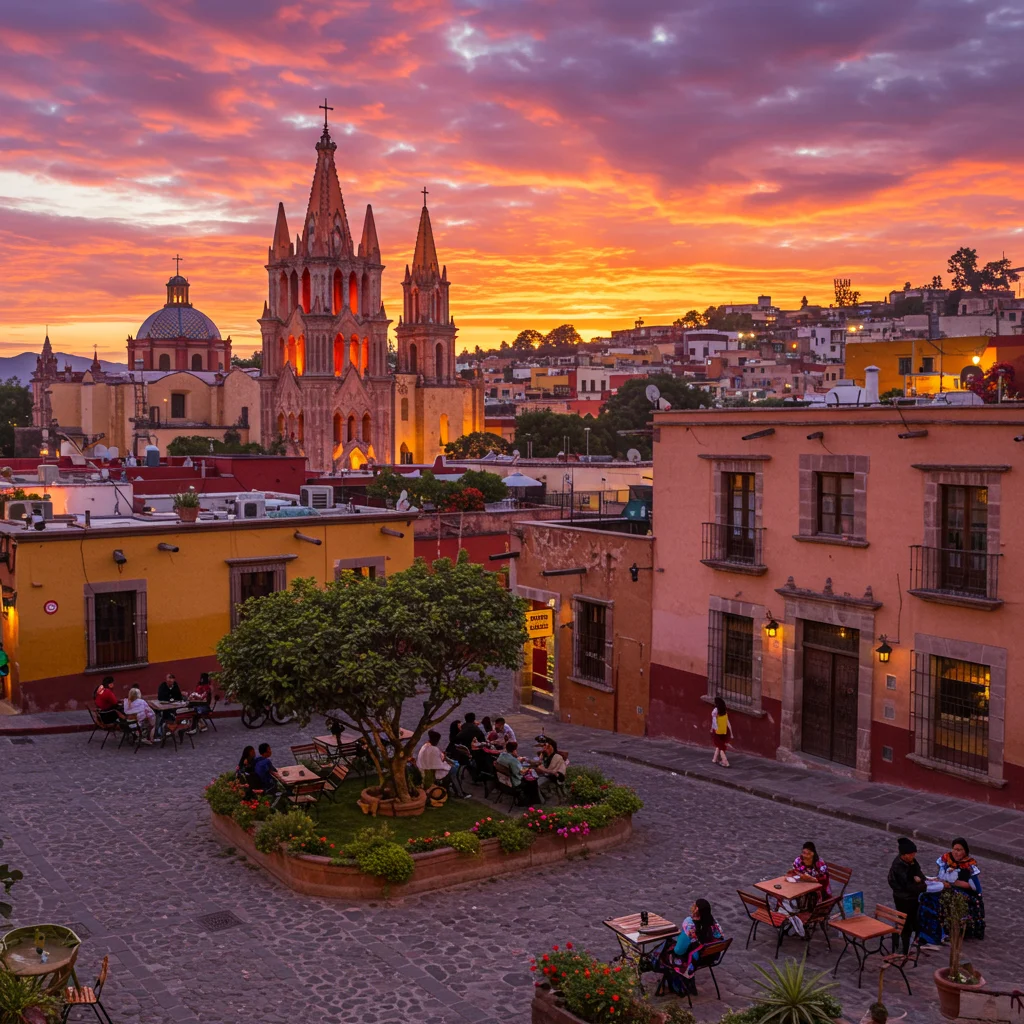
Early morning and late afternoon provide the best light, casting long shadows and warm hues across the city.
Best Photo Spots on Your Walking Tour
Top locations for memorable photos include:
- El Jardín Principal with La Parroquia as a backdrop
- Calle Aldama for its classic perspective
- The rooftop terraces of central cafés
- Viewpoints overlooking the city from the hills
Don’t forget to capture candid moments of daily life and festive celebrations.
Tips for Photographing Colonial Architecture
To highlight architectural details, experiment with different angles and focus on textures such as carved stone, wrought iron, and colorful tiles. Use natural light to enhance depth and contrast, and be patient when waiting for the perfect shot.
Respect private property and always ask before photographing people or inside homes.
Meeting Locals: Engaging With the Community
Meaningful connections with locals can transform your visit. San Miguel’s residents are known for their hospitality and pride in their city’s heritage. Engaging in conversation, attending community events, or joining a workshop opens doors to authentic experiences.

Learning a few basic phrases in Spanish helps bridge cultural gaps and shows respect for local customs.
Language Tips for Visitors
Simple greetings and polite expressions go a long way. Practice saying “Gracias” (thank you), “Por favor” (please), and “¿Dónde está…?” (Where is…?). Many locals speak some English, especially in tourist areas, but efforts to communicate in Spanish are always appreciated.
Carrying a phrasebook or translation app can be helpful for more complex interactions.
Cultural Exchange Opportunities
Community centers, language schools, and art institutes often host cultural exchange programs, conversation clubs, and volunteer opportunities. These activities foster mutual understanding and create lasting memories for both visitors and residents.
For a different perspective on cultural immersion, our post on the Xochimilco dinner cruise explores another side of Mexican hospitality.
Accessibility: Can Everyone Enjoy the Walking Tour?
San Miguel de Allende’s historic streets present some challenges for those with mobility issues, but many attractions are accessible with advance planning. The city has made strides in improving access to public spaces and museums.

Wheelchair users and families with strollers may encounter cobblestones and occasional steps, but alternative routes are often available.
Wheelchair and Stroller Access
We recommend contacting tour operators or individual attractions in advance to confirm accessibility options. Many museums, restaurants, and hotels offer ramps and accessible restrooms. Guided tours tailored to mobility needs can make the experience more comfortable and enjoyable.
Bringing a companion can also be helpful when navigating uneven terrain.
Guided vs. Self-Guided Walking Tours: Which Is Right for You?
Both guided and self-guided walking tours offer unique advantages in San Miguel de Allende. The choice depends on your interests, travel style, and desire for flexibility.

Guided tours provide expert insights and curated experiences, while self-guided routes allow for spontaneity and personal discovery.
Pros and Cons of Guided Tours
Benefits of guided tours include:
- Access to expert knowledge and local stories
- Convenient logistics and pre-planned routes
- Opportunities for social interaction
Potential drawbacks may include less flexibility and larger group sizes.
Planning Your Own Self-Guided Route
Self-guided tours allow you to explore at your own pace, linger at favorite spots, and follow your curiosity. We suggest using a detailed map, researching points of interest, and allowing extra time for unexpected discoveries.
For inspiration on crafting a personalized adventure, see our tips in the Teotihuacan private tour article.
Map of San Miguel de Allende’s Walking Tour Route
A reliable map is essential for navigating San Miguel’s winding streets and hidden alleys. Most visitor centers and hotels provide complimentary maps, highlighting major attractions, recommended routes, and accessible pathways.
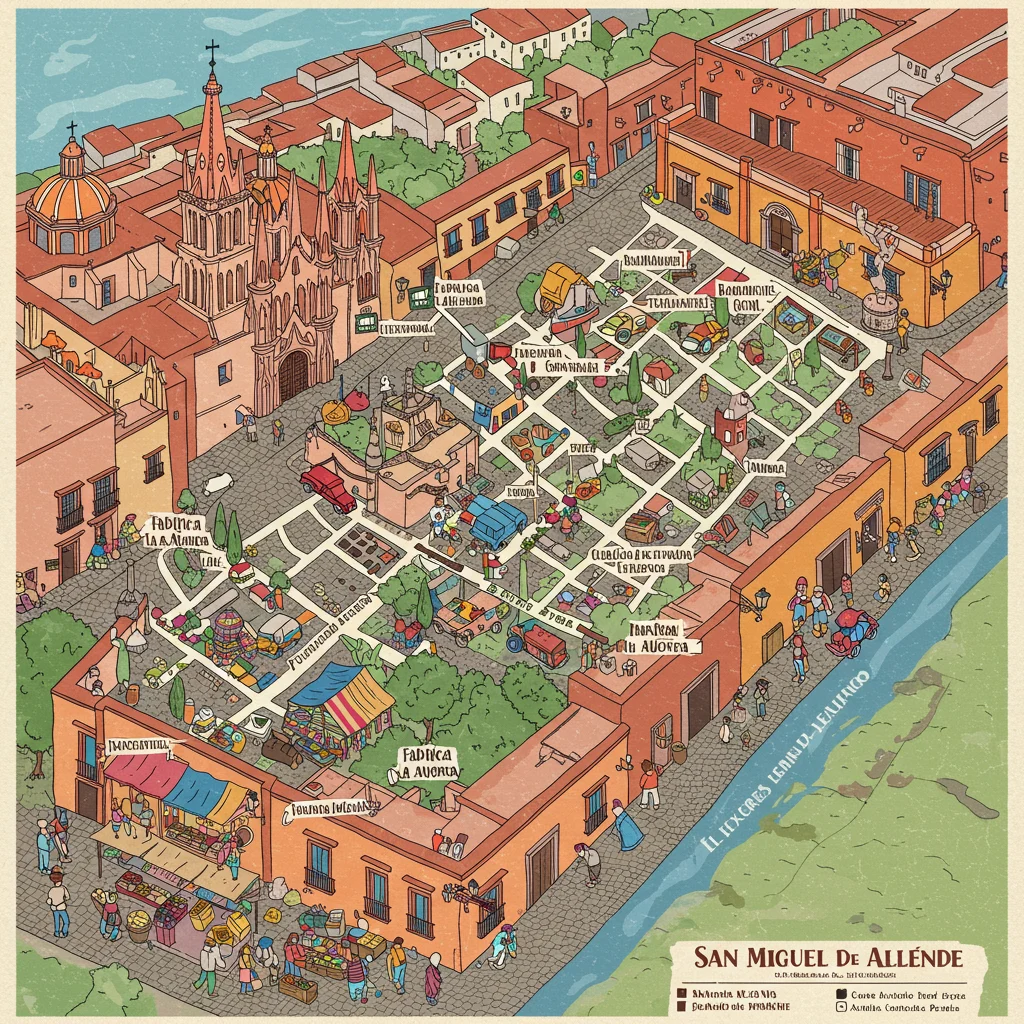
Digital maps and navigation apps can also be helpful, especially for locating lesser-known sites or planning detours.
Suggested Itinerary: One-Day Walking Tour
For those with limited time, a well-planned one-day itinerary covers the city’s highlights while leaving room for spontaneous enjoyment. We suggest starting at El Jardín Principal, visiting La Parroquia, exploring the Casa de Allende Museum, and browsing the Mercado de Artesanías.

Enjoy lunch at a local café, then continue to Fábrica La Aurora and end your day with sunset views from a rooftop terrace.
Suggested Itinerary: Two-Day In-Depth Experience
A two-day itinerary allows for a more leisurely pace and deeper exploration. On the second day, consider visiting the Botanical Garden, Sanctuary of Atotonilco, and Instituto Allende. Attend a performance at Teatro Ángela Peralta or a workshop at a local studio.
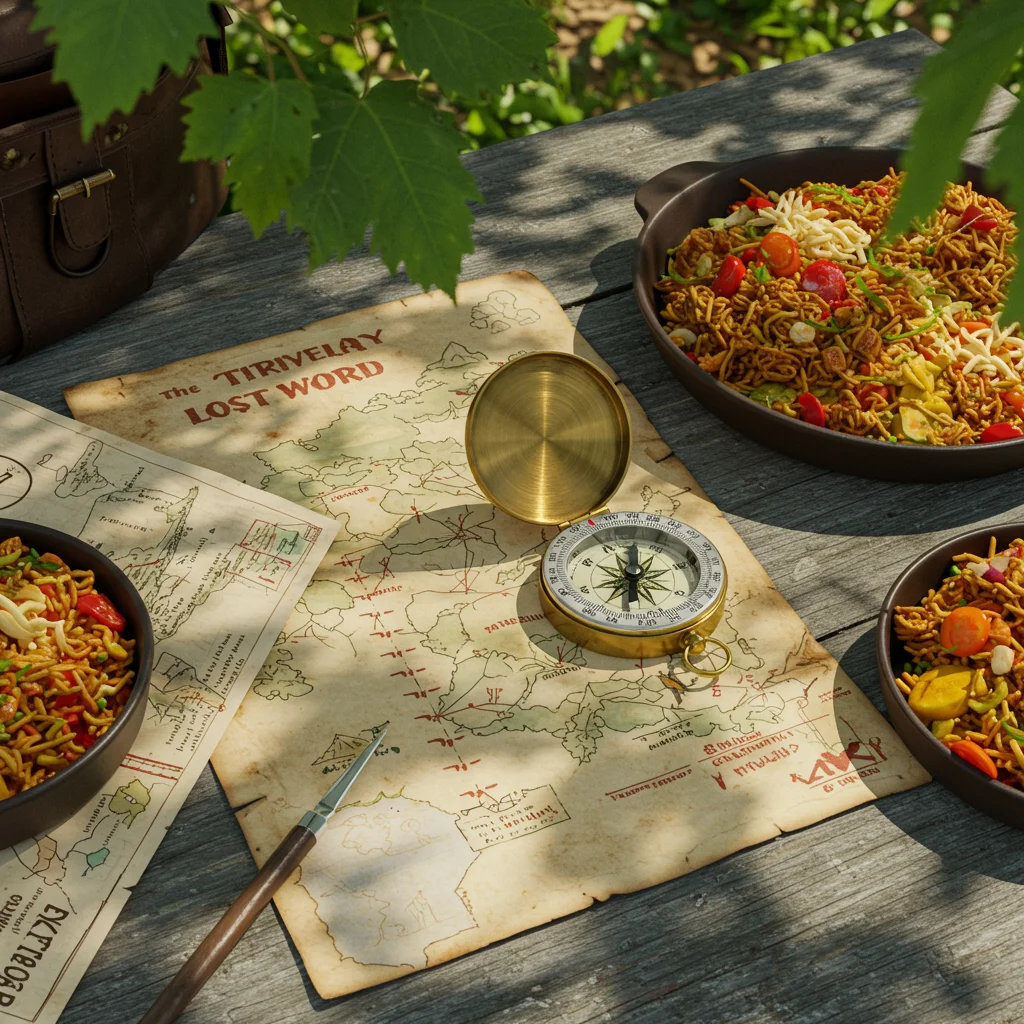
Take time to wander hidden courtyards and sample regional dishes, fully immersing yourself in the city’s rich cultural life.
Sustainable Tourism: Respecting San Miguel’s Heritage
Travelers play a vital role in preserving San Miguel de Allende’s heritage and supporting its community. Practicing sustainable tourism ensures that future generations can enjoy the city’s beauty and traditions.
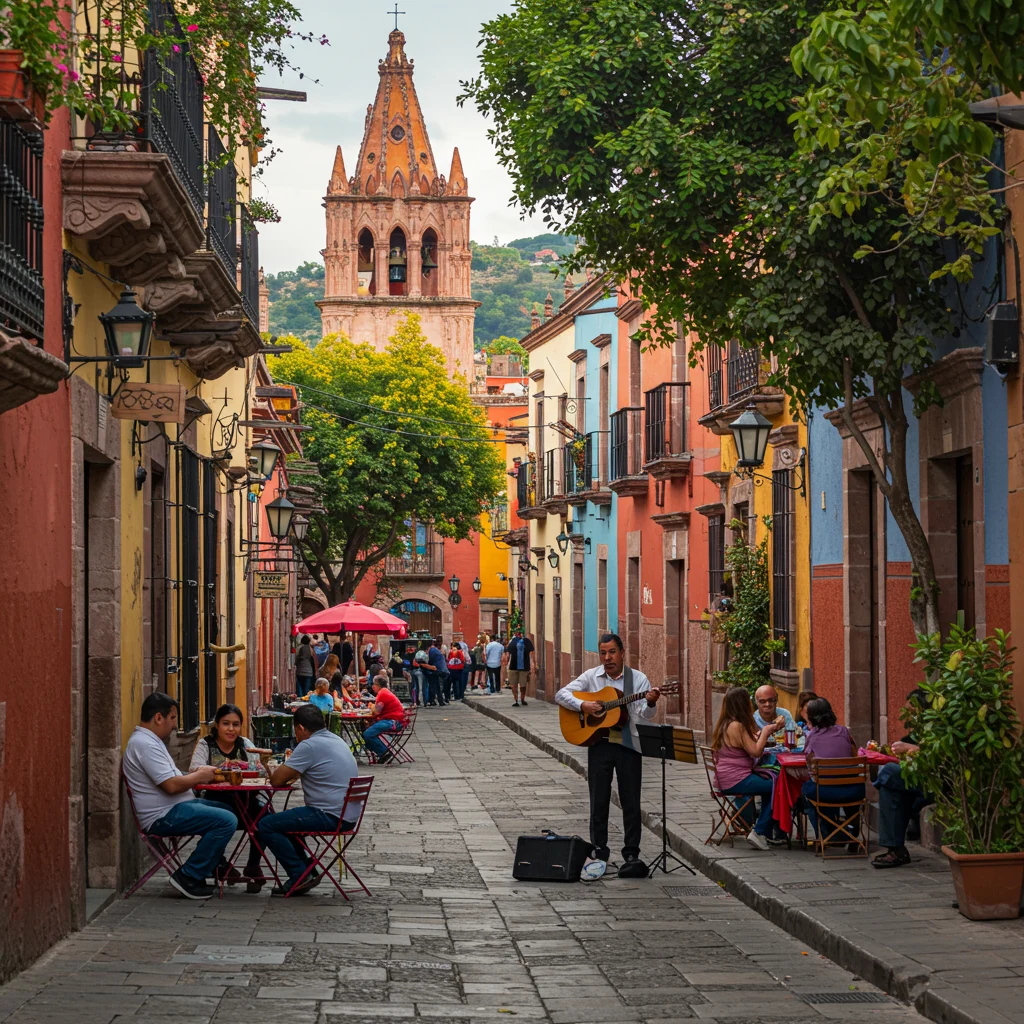
Simple choices—such as minimizing waste, respecting local customs, and supporting small businesses—make a meaningful difference.
How to Be a Responsible Visitor
Responsible tourism includes:
- Using reusable bags and water bottles
- Respecting historical sites and not touching fragile artifacts
- Participating in community-led tours and workshops
- Educating yourself about local issues and conservation efforts
Your thoughtful actions contribute to the city’s ongoing vitality.
Supporting Local Businesses and Conservation
Choose locally owned restaurants, shops, and accommodations whenever possible. Many businesses reinvest in the community and support cultural or environmental initiatives. Donating to conservation projects or volunteering your time are other impactful ways to give back.
Together, we can help preserve San Miguel’s unique character for years to come.
Frequently Asked Questions About San Miguel de Allende Walking Tours
What is the average length of a walking tour? Most tours last 2–4 hours, but self-guided routes can be tailored to your interests and schedule.

Are tours offered in English? Yes, many guides are bilingual and tours are available in both English and Spanish.
Can I book a tour in advance? Absolutely. Booking ahead is recommended during peak travel seasons or for specialized experiences.
What should I wear? Comfortable shoes and weather-appropriate clothing are essential. Bring a hat and sunscreen for sun protection.
Is tipping expected? Tipping guides, performers, and service staff is customary and greatly appreciated.
How to Book on Viator
Booking your walking tour or other activities in San Miguel de Allende is simple with Viator. Their platform offers a wide range of guided tours, workshops, and cultural experiences, all with convenient online reservations and verified reviews.

Whether you’re seeking an in-depth historical tour, an artisan class, or a day trip to the Sanctuary of Atotonilco, Viator provides reliable options to help you book activities that fit your interests and schedule.
Be sure to read the tour details and cancellation policies before confirming your reservation for a smooth and enjoyable experience.
Conclusion: Why San Miguel de Allende Belongs on Every Traveler’s List
San Miguel de Allende offers an extraordinary blend of history, culture, artistry, and hospitality. A walking tour through its storied streets reveals a city that honors its past while welcoming the world with open arms. From soaring church spires to bustling markets and hidden gardens, every step is an invitation to connect, learn, and be inspired.
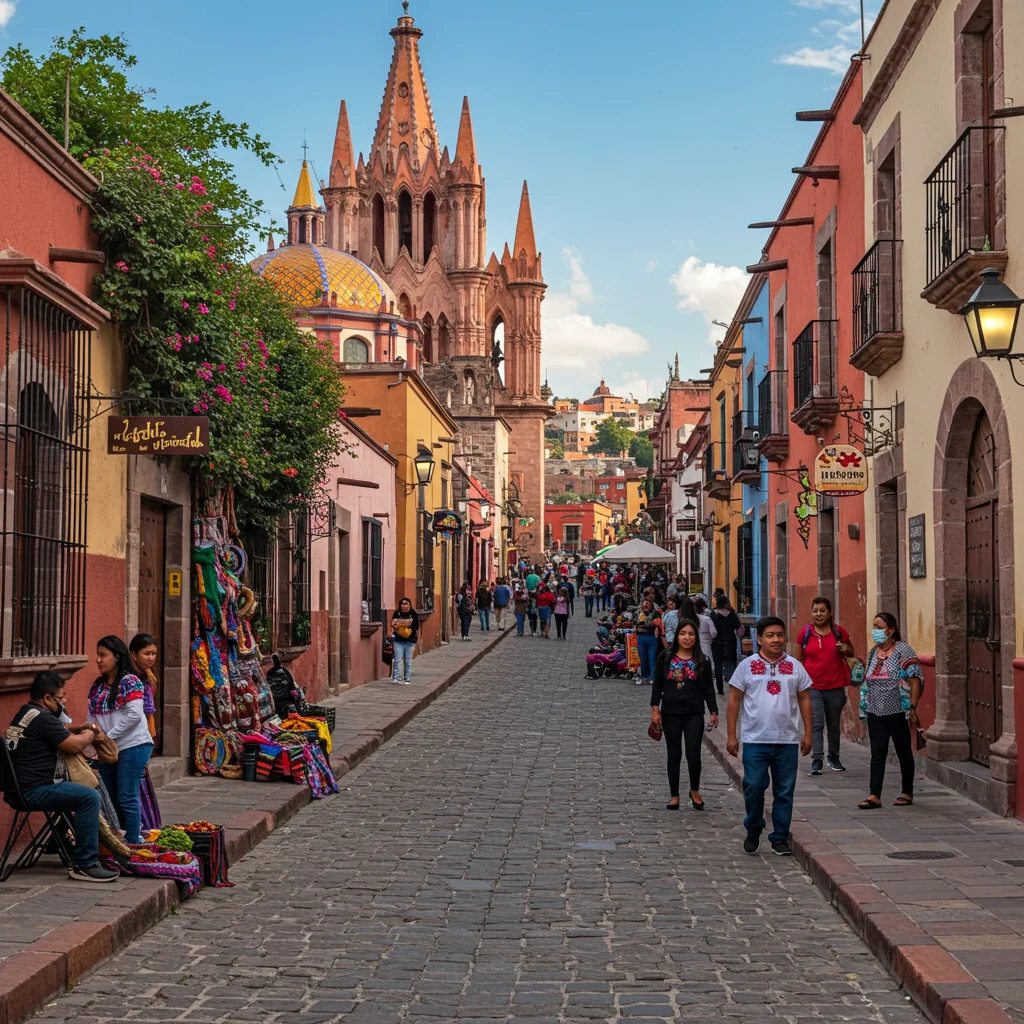
As part of your travel planning, we encourage you to explore more insights and recommendations at Izase. Let San Miguel de Allende ignite your sense of wonder and leave you with memories to cherish for a lifetime.
“Disclaimer: This information is accurate to the best of our knowledge; however, there may be changes or mistakes. Please verify exact details on the Viator booking page.”

